Welcome to Jinja City
Queen Elizabeth National Park is truly a Medley of Wonders! Located in Kasese District of Uganda, this Uganda safari park has various ecosystems.
Named after Queen Elizbeth II, this park was previously named Kazinga National Park. The gazetting of Queen Elizabeth National Park has long ensured the conservation of its ecosystems for decades, which in turn benefits the surrounding communities.
Some of the activities for those on Queen Elizabeth safari in Uganda to carry out in this popular national park include wildlife viewing (primary activity) in Kasenyi, Mweya and Ishasha sectors, Chimpanzee tracking in the exhilarating Kyambura Gorge, Kalinzu forest or Maramagambo forest, Hot air ballooning and local community visits.
Other interesting activities include hiking and nature walks, bird watching, launch cruises on the Kazinga Channel, lion tracking, a visit to the explosion crater and a visit to the Katwe salt works.
There is no specific best time to visit Uganda for a safari to Queen Elizabeth National Park.Tourists can visit Queen Elizabeth National Park at any time of the year.
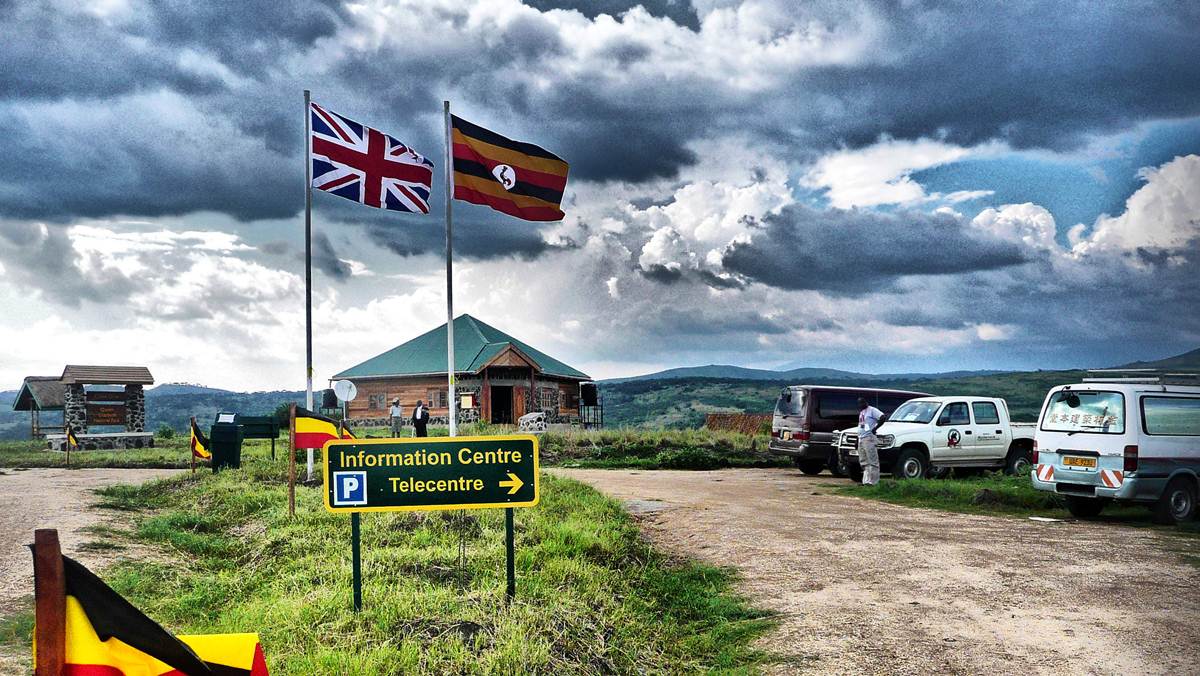
However, the best experiences are got during the months of June to September and December to January respectively. This wildlife park is not only among the best wildlife viewing destinations, but is also Uganda’s most popular tourist destination.
When you go gorilla trekking in Bwindi, endeavour to add a visit to this lovely park as they are not so far away from each other. It’s also easier to connect QENP with Kibale Forest National Park just in case you want to try out its Chimpanzee trekking experience.
The ecosystems are made up of sprawling savanna, shadowy, moist forests, lakes and fertile wetlands. That makes Queen Elizabeth National Park a good home to various species of wildlife, primates and birds. By extension, this has made Queen Elizabeth National Park a haven for Uganda tours and Uganda safari.
Location of Queen Elizabeth National Park
One would wonder where Queen Elizabeth National Park is Located? Well, Queen Elizabeth National Park is found in the western part of Uganda.
Queen Elizabeth National Park lies between Lakes Gorge and Albert with the Kazinga Channel crossing through its 700 sq mile land area. The park was named after the Queen of England in 1954 following her visit.
Queen Elizabeth National Park lies against the back of the great Rwenzori Mountains with stunning and panoramic views that are made up of various crater lakes.
These lakes are carved dramatically into the green rolling hills. When you visit, you will reward yourself with magical sights of the Kazinga Channel.
This channel’s shores are infested with hippopotamuses, elephants and buffaloes. You will also see the Savannah plains of Ishasha, whose fig trees obscure tree climbing lions that are ever ready to knock on herds of the famous Ugandan Kob.
Just like the sights and attractions, Queen Elizabeth National Park Uganda does have a rich cultural background too.
There are many scenarios and opportunities for tourists to meet up with the local communities and be part of amazing cultural activities like traditional dances, storytelling moments, listening to traditional music and more. You can further engage in community projects and leave footprints behind.
How to get to Queen Elizabeth National Park
the park is located about 389 km from the capital Kampala and can be accessed wither by road on a 6h 30min drive via Masaka Road or by a charter flight.
Top Attractions in Queen Elizabeth National Park
Tree Climbing Lions
There are not so many prides of tree climbing lions in the whole world. In Queen Elizabeth National Park you can explore the southern Ishasha sector to track these lions commonly seen up in the fig and acacia trees.
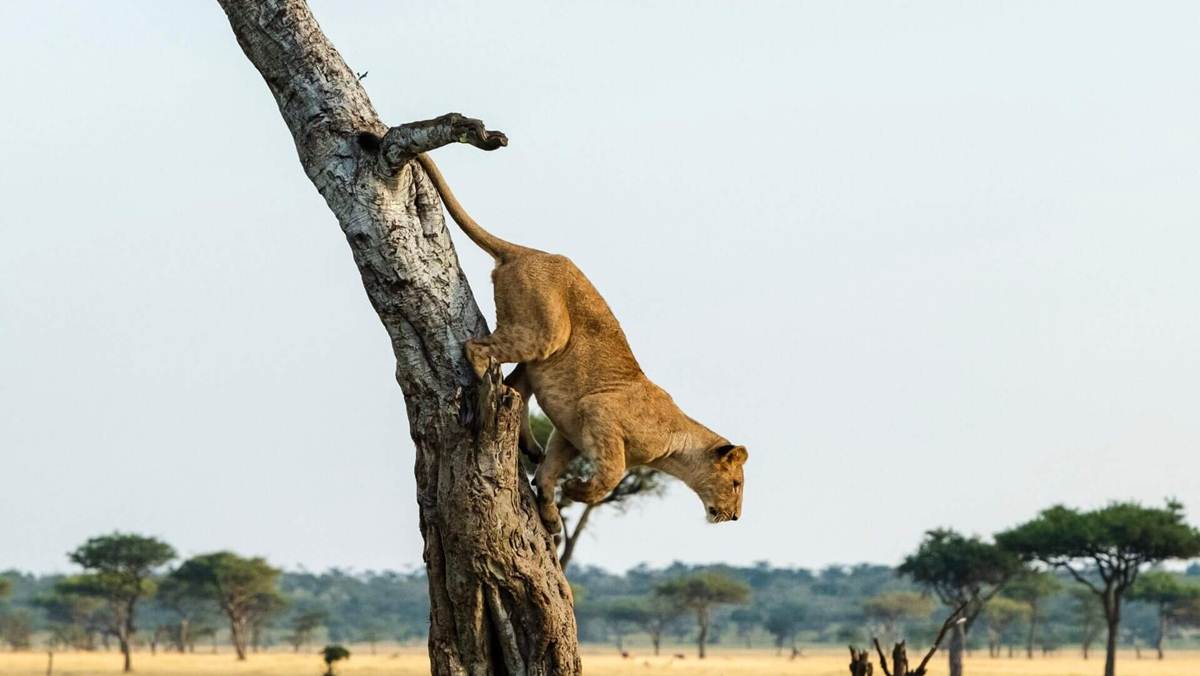
Tree climbing lions are also known as, cactus climbing lions.There is only two population of these mysterious tree climbing lions in the whole world. You will find them in Ishasha sector in the southern part of Queen Elizabeth national park and Lake Manyara national park in the southern part of Tanzania.
The fact that these are not climbing animals makes these big cats a major attraction for the tourists that visit East Africa.
The Kazinga Channel
This natural water channel connects Lakes Albert and Gorge and is home to a large number of hippos, Nile Crocodiles, elephants and hippos which can easily be seen on the thrilling Kazinga Boat Ride
Kazinga Channel is a wide 32km long water body that connects the Lake Edward to Lake George in the south western part of Uganda.
The water body is found in the Queen Elizabeth national park and is a habour for many wild animals. Kazinga channel shores are know for having wild life like Elephants, Hippos and Nile Crocodiles. It is a major attraction as tourists take a boat cruise across its shores to view the magnificent wildlife scenery.
Mweya Peninsula
This is a stretch of land that protrudes into Lake Edwards is commonly visited during game drives as it offers perfect game views while exploring the various game tracks.
Mweya Peninsular is a piece of land that juts into the Lake Edward. It’s a one of kind looking pieces of land and tourists come here to visit the land occasionally.
Mweya peninsular comprises of the Kazinga channel track part of it being covered by candle stick thorns with the outlying impressive Savannah making it an excellent area for game viewing, this zone has got several game tracking points which must be followed during game drives.
The Katwe Explosion Crater Lakes
These lakes found in the northern part are found on the highest elevation of the park. from here tourists enjoy sweeping views of the Rwenzori Mountain ranges, the western rift valley escarpments and lakes George and Edward.
Lake Katwe Explosion Craters are located north of Mweya peninsular. They are the highest elevation within Queen Elizabeth national park in Western Uganda.
You can get to see the great western rift valley of Africa and the escarpments during the drive. You will also see Lake George, a chance of Mountain Rwenzori ranges and Kazinga Channel that connects Lake Edward to Lake George.
Lake Katwe Salt Works
Within the alkaline Lake Katwe, salt mining works have been ongoing for several years since that is the main economic activity in the area. Consequently a large number of tourists visit here to learn and observe the traditional method of salt mining
Lake Katwe Salt Works is a salt water lake and lake katwe is located north of Mweya peninsular, in the south western part of Uganda with in Queen Elizabeth national park.
It has been a source of rock salt for years and has salt mining has been a major economic activity in the surroundings. Tourists visit this area to learn and look at the lake with a sanile smell because of its sulphurous chemicals which form the salt.
The Kyambura Gorge
This verdant forested 100 meter deep valley with peculiar is home to a large number of primates and popular for Chimpanzee tracking tours in Uganda.
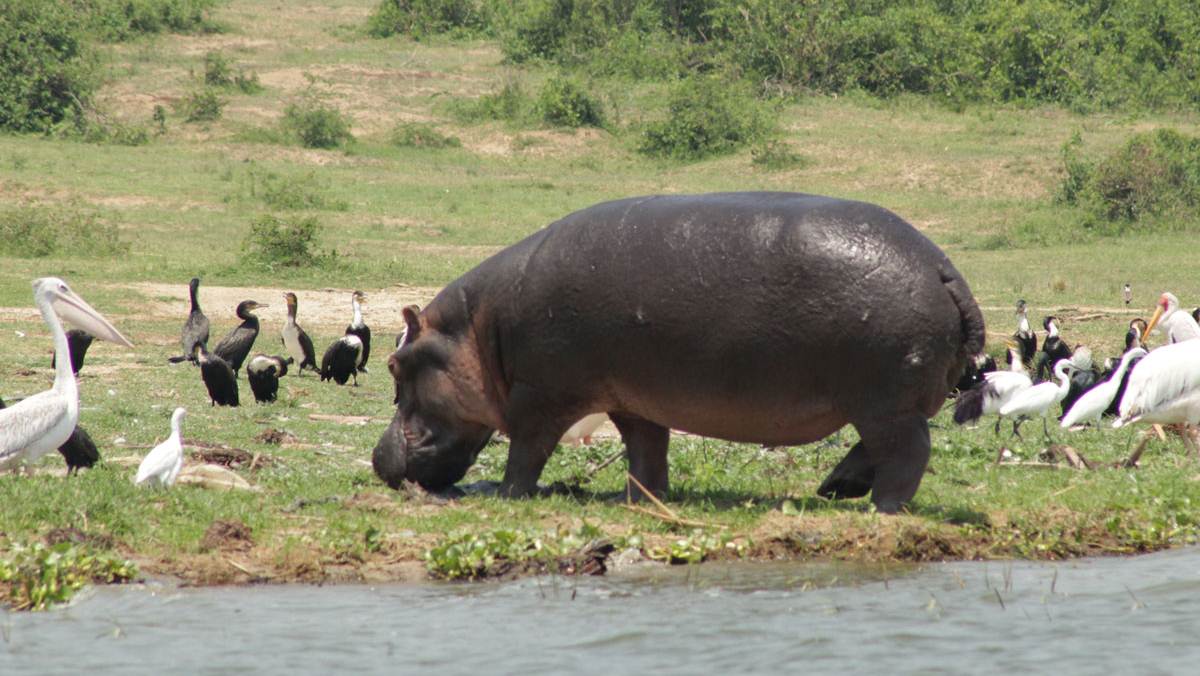
Kyambura Gorge is the magnificent valley of apes in the Queen Elizabeth national park in Uganda situated in the Eastern part of the park. This is drain by river kyambura.
It was formed by the disorderly waters of River Kyambura. It’s about 100 metres deep the site of the land scape is so breath taking and one of the best u can find in the world.
Maragambo Forest
Maramagambo forest is located in the Queen Elizabeth national park in south western part of Uganda bounded by “lake nyamadindiri” and “lake kyasanduka”. Tourists mostly love this forest for its bat caves and resident African rock pythons. Many come around to visit this wide vegetation.
Kasenyi Plains
These plains are popularly visited by tourists on a Uganda Wildlife Safari as they are home to a very large number of antelopes, the Uganda Kobs, lions and several large predators
Kasenyi plains are found in the north Eastern part of and some times known as Mweya. Queen Elizabeth national park is in western part of Uganda.
These plains are also known as Kasenyi sector the plains are fascinating with endless views of Savannah’s with roaming antelopes and Uganda Kob. The Kasenyi plains is also home to numerous lions, leopards and many other cats.
Kalinzu Forest
This is offers very rewarding Uganda chimpanzee tracking experiences and it is located on the southeastern corner of the park.
Kalinzu Forest is located in the south Eastern edge of the Queen Elizabeth national park and is one of a must destinations in your list at the park with better chimpanzee tracking than in Kyambura George.
Kyambura Wildlife Reserve
Kyambura Wildlife Reserve is one of the known areas of Queen Elizabeth national park with extraordinary views of wildlife, primates, butterflies and many other things to be included in ones travel list.
It’s bordered by kyambura Gorge to the west kyambura is situated on the north Eastern side of Queen Elizabeth national park and also links to the Kazinga channel, forming it’s northern boundary villages and village plantations lie to the southern end of kyambura game reserve.
Lake George
Lake George is found near Queen Elizabeth national park in western Uganda, it’s situated in the western part of the great African rift valley. It covers and area of about 250 kilometers squared and its depth is about 2.4 metres hence small and shallow.
Tour Activities in Queen Elizabeth National Park
Lion Tracking
Mainly tourists come to Queen Elizabeth National Park for lion Tracking and they get a chance to get an upclose session with the lions and get to study their behaviors. Game Viewing
During the game viewing activity one gets a chance to view various animals including giraffes, leopards, elephants, hippos, flamingoes, pelicans and many others including reptiles.
Chimpanzee Tracking
During chimpanzee tracking, tourists get to go on with their guides to track chimpanzees in the forests and get to study and understand how they live.
Hot Air Balloon
This is an activity where the tourists together with their guides get a chance to take a flight I the hot air balloons so as to catch an aerial view of the park, the wild life, the riftvalley, lakes , etc .
Birding
Some tourists come to Queen Elizabeth national park to go bird watching and get a glimpse of the various bird species that the park has to offer.
Accomodation in Queen Elizabeth National Park
With a wide variety to lodges, campsites, hotels and tented Camps, Queen Elizabeth National Park offers accommodation for everyone like the Ishasha Wilderness Camp Queen Elizabeth National Park irrespective of your budget and these ranges from luxury, mid-range to budget facilities.
When one visits Queen Elizabeth National Park, after a day of tours they get a chance to visit various lodges, hotels and camp sites where they get to rest and refreshen. Queen Elizabeth National Park offers a wide range of accomodations ranging from Luxury, to midrange and budget lodges.
With the help of a good tour company, you will be able to book the accomodation facility that suits your budget.
Some of the lodges offered when you visit Queen Elizabeth National Park include: Mweya Safari Lodge, Kasenyi Safari Camp, Elephant Plains Lodge, Elephant Hub Lodge, Simba Safari Camp, Queen Elizabeth Safari Camp, Queen Elizabeth Bush Lodge, Ishasha Tented Camp and Kitandara Hippo Hill Lodge.
Elephant Plains Lodge
Found in the Northeast Escarpment, the Elephant Plains Lodge is one of the newest properties in Queen Elizabeth National Park.
It sits high up on the escarpment, offering views that stretch for miles and miles. Right next to the lodge is Lake Kikorongo, frequently visited by herds of elephants (hence the name!).
The lodge is made up of a collection of private cottages set around the main compound. It boasts a bar and lounge set above a pool, showing off the panoramic scenery around the escarpment.
This area of the park is particularly stunning, with views of the grasslands stretching to Lake George and the easily accessible Kasenyi Plains where you will often see wildlife wandering through.
Guests can choose to stay in one of six double/twin cottages, or a family cottage which offers two separate bedrooms with enough space for five people.
All the cottages have en-suite bathrooms with bathtubs as well as showers, expansive windows, and large private verandas with perfect views of the surroundings.
The roofs of the cottages are constructed using local brown savannah grass, which helps the lodge blend seamlessly into the surroundings and acts as an effective cooling system.
In addition, the lodge boasts a spacious lounge with comfortable seating areas, a well-stocked bar with bistro seating, and a wonderful restaurant serving an international menu inspired by local flavours.
Guests can also enjoy Elephant Plains Lodge’s large swimming pool, the perfect opportunity to cool off at the end of a day exploring the park.
Kyambura Gorge Lodge
Kyambura Gorge Lodge, found right next to the Kyambura Gorge in the eastern sector of the park, is quickly becoming one of the best accommodation options in Uganda.
Due to its location, it is the perfect base for chimp trekking, game drives and boat safaris.
The building was formerly a coffee plantation store, which has now been converted into the main lodge around which eight luxury rooms have been built.
The relaxed style of the buildings, made primarily with wood, stone and thatched roofs, creates an intimate feel.
All the rooms have a large four-poster bed, private veranda, en suite bathroom and seating area full of simple and unique furniture pieces. The style is contemporary yet still providing that classic safari lodge feel. Every guest can also benefit from a personal butler service.
The main lodge has a lounge, dining area and bar which are spacious and feature a mix of wooden and tiled floors, large windows, and artwork hung on the walls.
The food served in the dining area is of a high standard, served by friendly and attentive staff. There is also a swimming pool and recently opened spa for guests to enjoy.
Ishasha Wilderness Camp
The Ishasha sector in the south-west is one of the quietest areas of the park. Here, the Ishasha Wilderness Camp offers a true tented camp experience without compromising on comfort or style.
Based on the banks of the Ishasha River, right at the border between Uganda and the Democratic Republic of Congo, the camp blends well into the natural surroundings.
Overlooking the Ntungwe River, Ishasha Wilderness Camp is built using canvas, wood, and thatched roofs to blend seamlessly into the surrounding woodlands.
There is a central area of the camp with a comfortable lounge, bar, dining area, spacious veranda, and even a quiet library. Guests can choose to enjoy their meals inside the dining area, outside on the veranda, or in their own tents.
The quality of food is exceptionally high, with both traditional Ugandan and European-style dishes available made with local ingredients wherever possible.
In addition, there is a free Wi-Fi service in the lounge where you can relax on the comfortable armchairs and admire the wonderful local artefacts decorating the space.
Each of the 10 private canvas tents are deliberately positioned to offer a fantastic view of the local hippos and herds of elephants from their verandas.
They are designed in the East African Meru style, and are comfortable and spacious. Each has an en-suite bathroom with eco-friendly toilets and showers to minimise the camp’s environmental impact, as well as solar panels to provide power to the tents.
Mweya Safari Lodge
The Mweya Peninsula extends out into the Kazinga Channel, a long natural waterway linking Lake Edward and Lake George.
Here you will find the Mweya Safari Lodge, a government property built over 30 years ago which has been converted into a large hotel. The central location is ideal for hopping on Kazinga Channel boat trips, and the views of the distant grasslands merging into the lakes are wonderful.
There is a wide range of room choices for guests at Mweya Safari Lodge. The simplest option is one of the 32 standard rooms, each with an ensuite bathroom and private balcony.
For the added benefit of air-conditioning, 12 deluxe rooms are available. The Honeymoon Suite is found in a private corner of the grounds with a romantic four-poster bed, and there are also luxury tents on offer which provide a relaxing, romantic atmosphere.
For bigger groups, private cottages are available with two and three bedrooms, living areas and spacious verandas.
The lodge offers a bar with large windows and an inviting veranda, gift shop stocked with local crafts, Uganda Wildlife Authority Informational Centre where visitors can learn more about the national park, and business centre.
The infinity pool has its own bar, allowing you to sip your favourite tipple as you gaze across the magical Kazinga Channel.
Visitors can choose to sit either inside in the lodge’s formal dining room or outside on the veranda whilst enjoying local and international dishes prepared by experienced chefs.
As an added treat, every Saturday evening the lodge hosts special barbecues with performances by traditional dancers.
Katara Lodge
The Rift Valley Escarpment is found in the south-east of the park, rising above the sweeping savannah. Perched on the edge of this impressive escarpment is Katara Lodge.
Here, the bamboo-based furnishings, thatched roofs, and wooden beams create a natural, relaxed atmosphere that perfectly blends into the surrounding environments.
The lodge is made up of eight individual thatched bungalows with canvas sides and wooden floors, furnished with a large double bed (or twin beds) and en-suite bathroom with bathtub and shower.
If preferred, the staff are happy to set up your bed on your bungalow’s spacious balcony so that you can sleep under the stars.
As there are only eight bungalows available, the service at Katara Lodge is attentive and personal.
The main part of the lodge, where you will find a comfortable lounge and restaurant, is set higher up on the hill and is completely open to the west to provide outstanding views of the plains and the Rwenzori Mountains in the distance.
There is also a library, where you can pick up a novel to enjoy outside whilst relaxing in a hammock.
Environmental sustainability is a big focus for Katara Lodge. They have a rainwater harvesting system to provide water for the lodge, solar water heaters and lighting to minimise energy use, and eco-friendly toilets. There is also a saltwater pool, which minimises the use of chemicals.
Best time to Visit Queen Elizabeth National Park
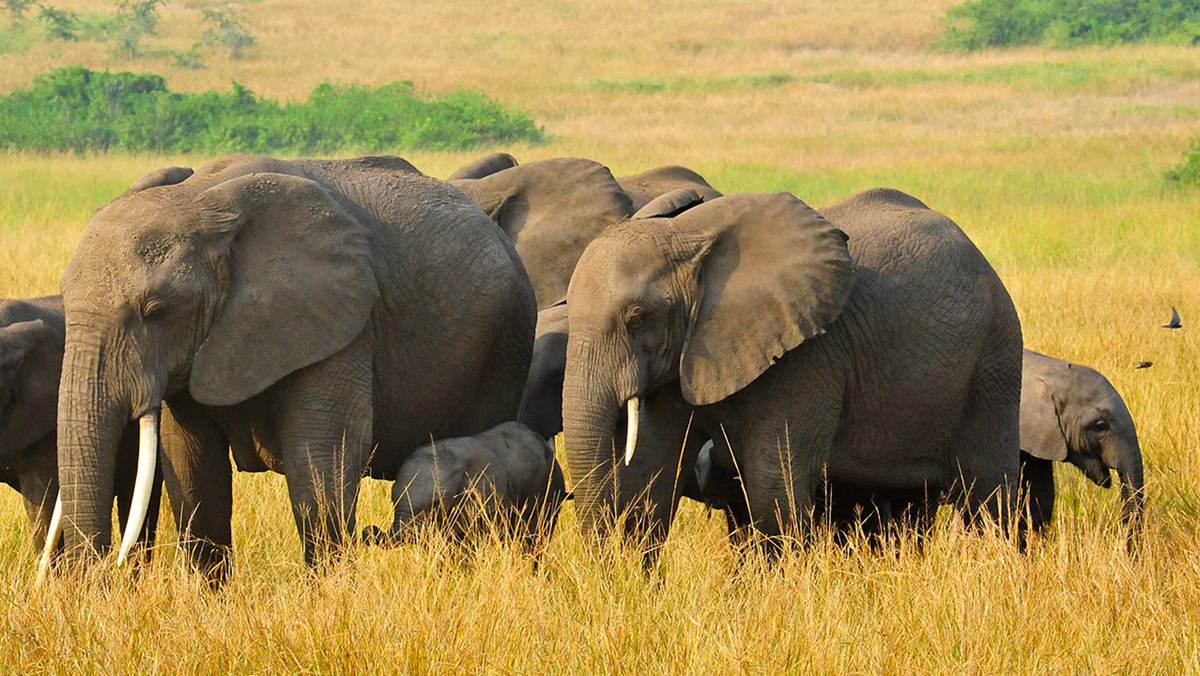
The Dry season that runs from January to February and from June to September is considered the best time to visit with the peak safari time in Uganda being from June to September, while Migratory species arrive in August to December, and March to May offering the best birding time.

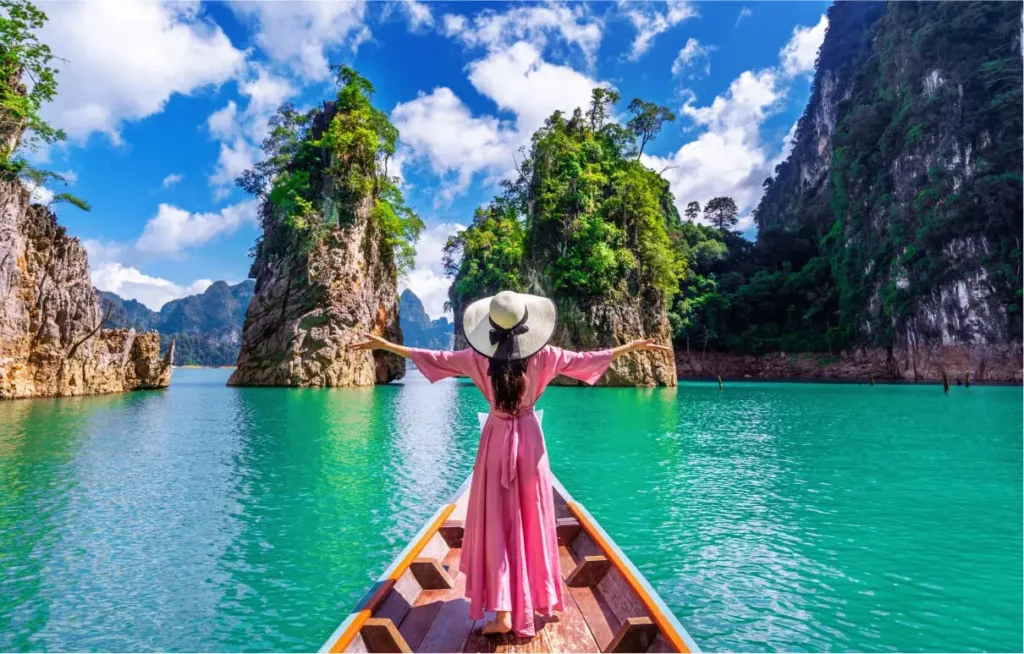



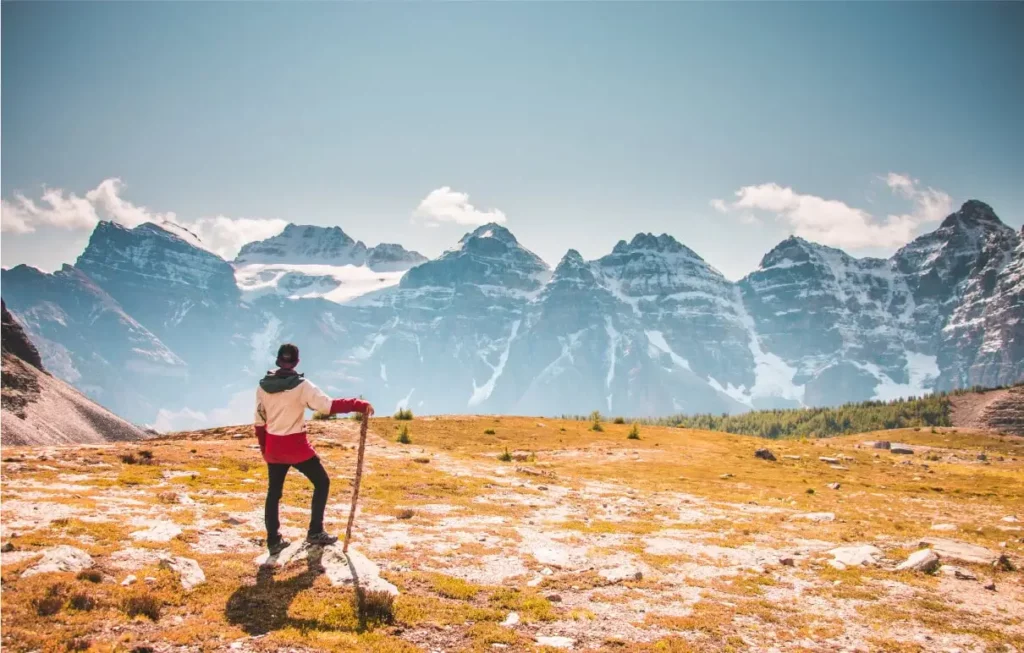
Land of the Tswana
There are so many places that you can visit in Botswana but there are some other attractions that stand out more than others and are worth visiting during Botswana Safari. These make the list of the top Tourist Attractions In Botswana.
There are many tours that you can do in Botswana and the most common is the overland tour, where you can drive around to most parts of the country in an overland truck. Most common tours include a Botswana Wildlife Safari, Victoria Falls and Chobe National Park package, Desert tracking, Premium safaris and 5 to 10 day safaris.
-
- Exploring ancient ruins, historical landmar.
-
- Immersive cultural experiences, local.
-
- Hiking, trekking, extreme sports, and out.
-
- A romantic destination like Paris, Venice.
-
- Kid-friendly activities, theme parks family.
-
- Premium accommodations, gourmet.








